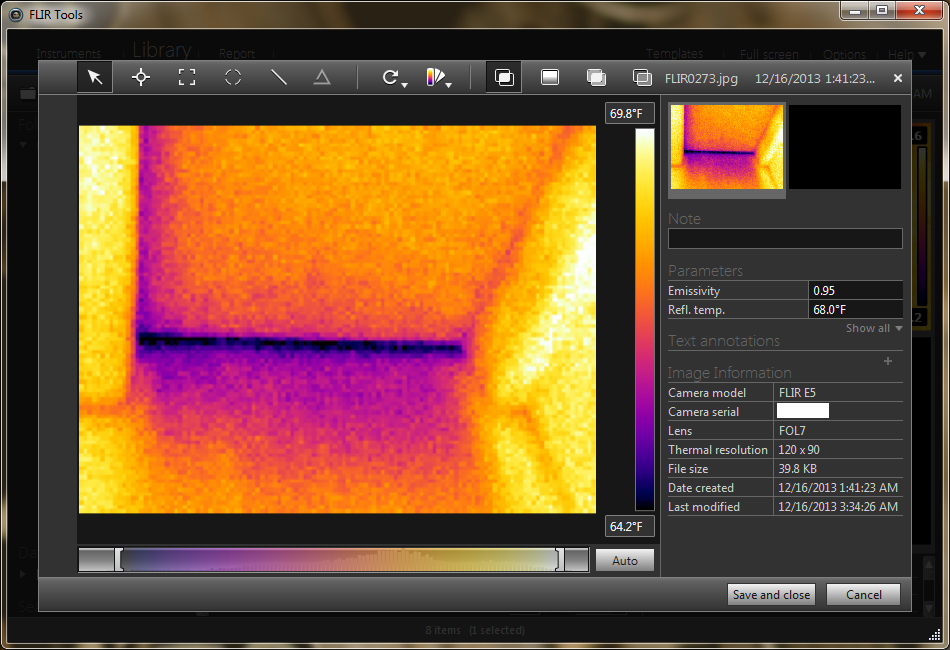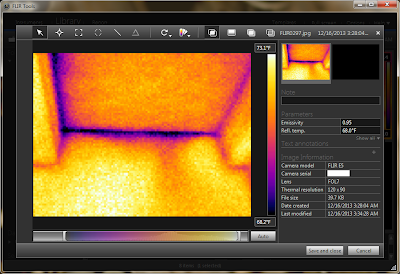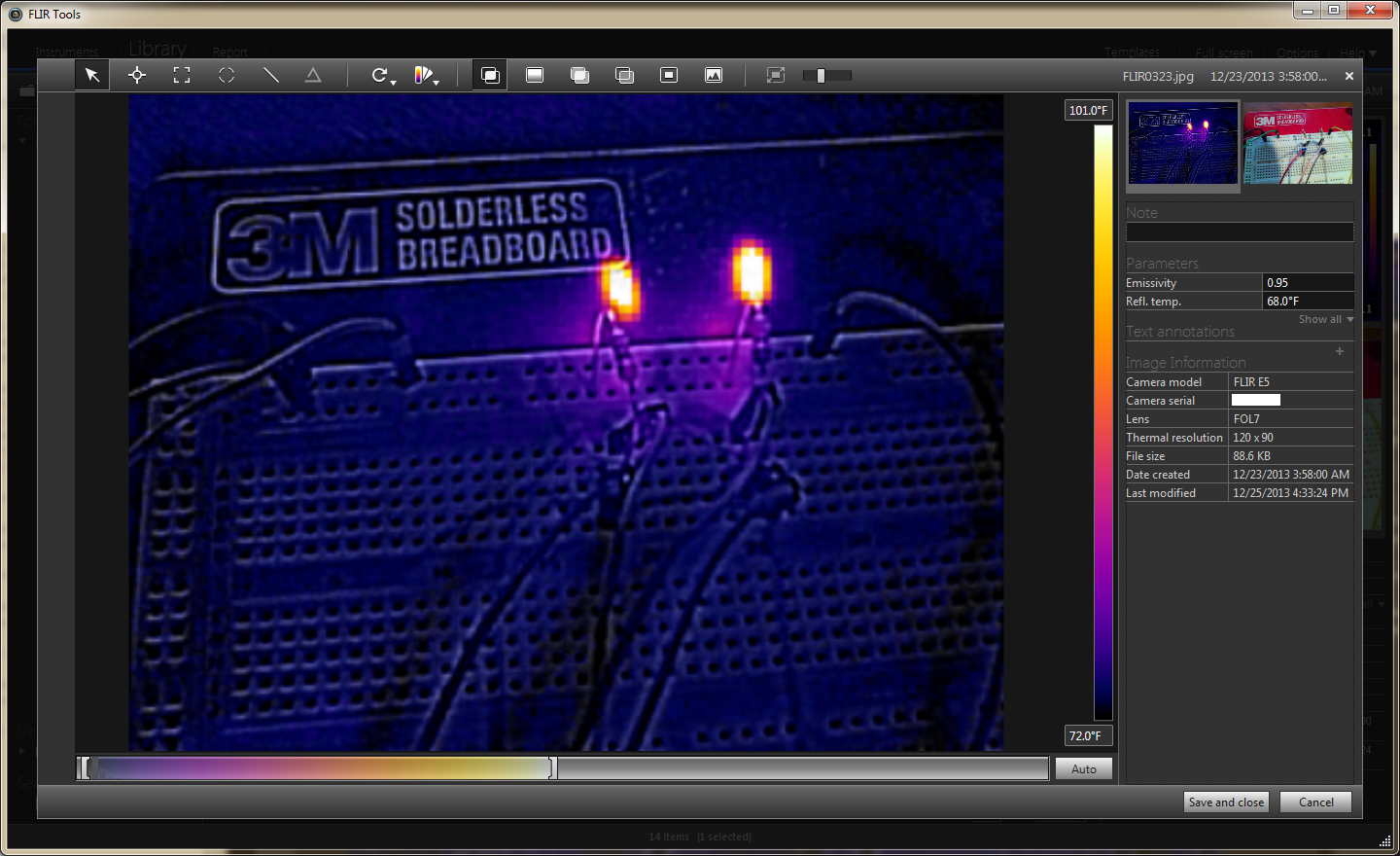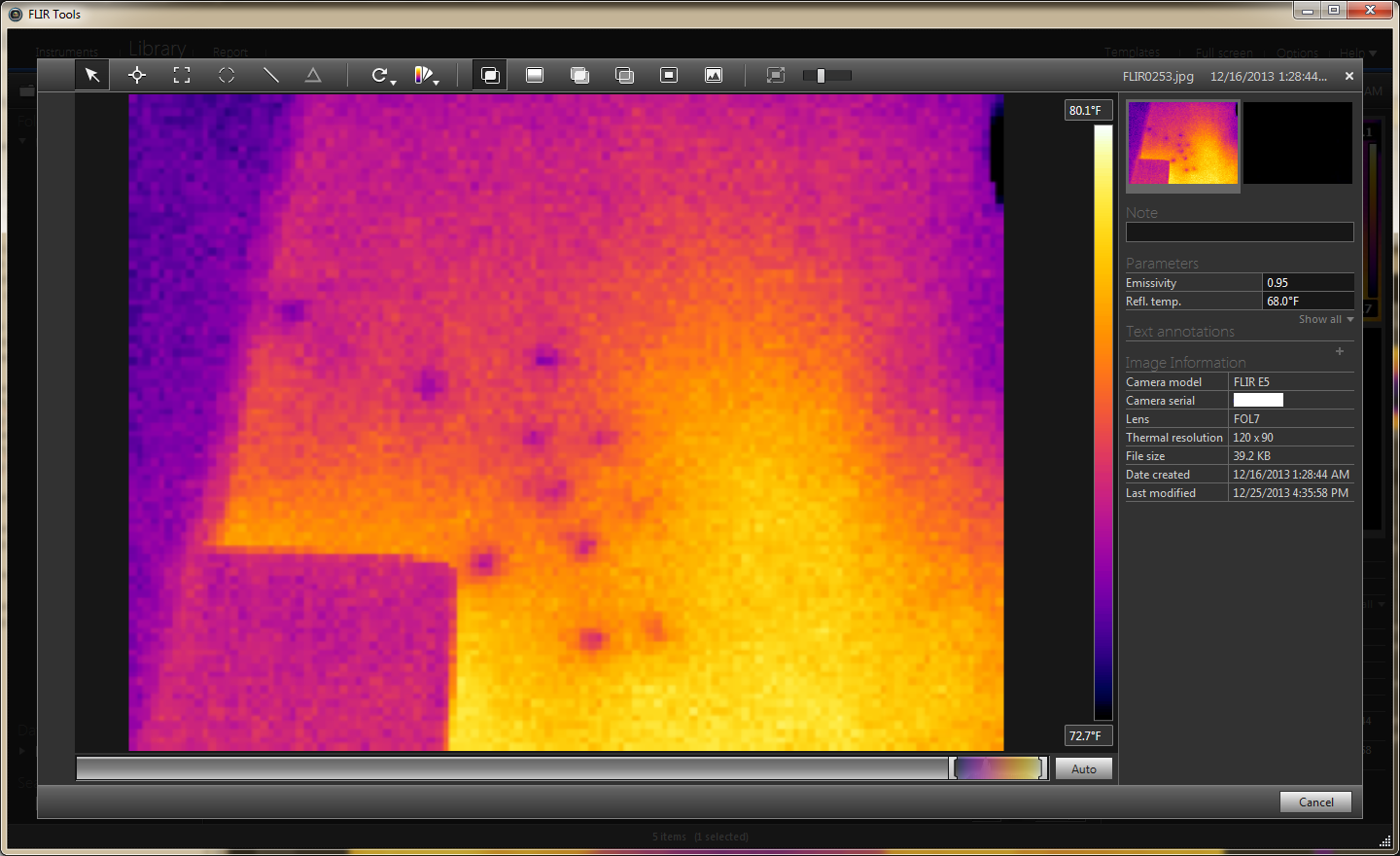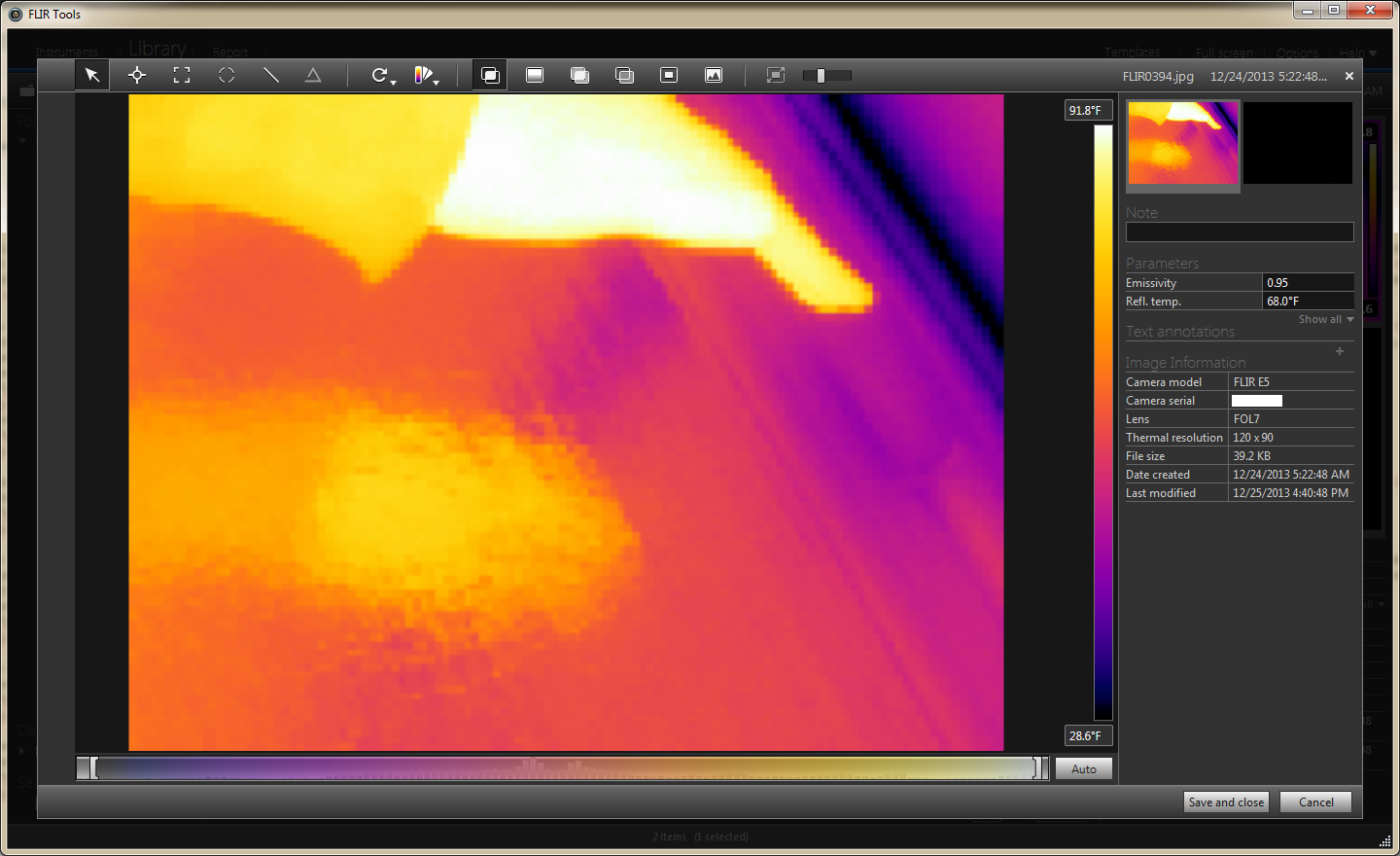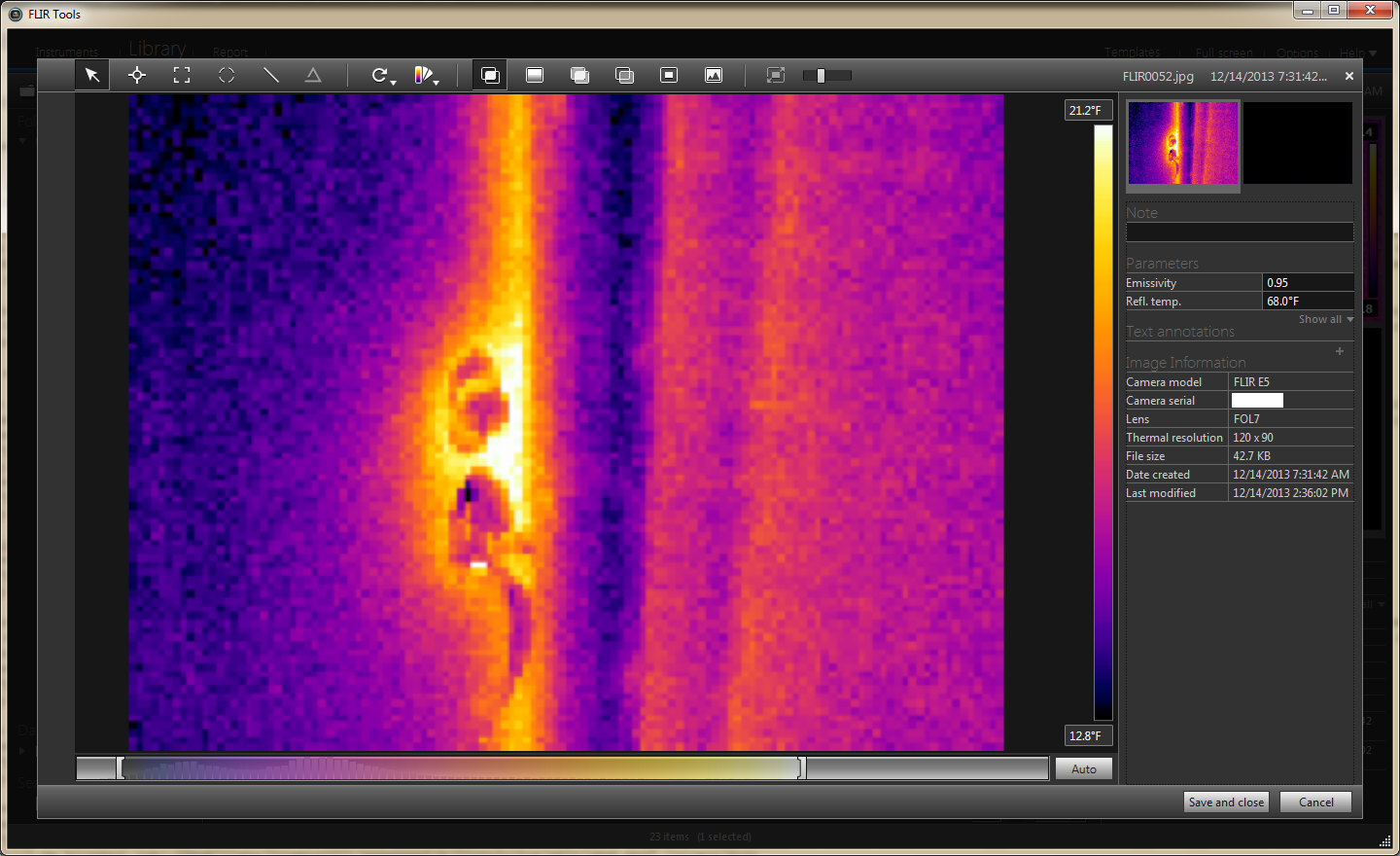Recently
I had the fortune to experiment with a FLIR E5 thermal camera. Seeing a
wide field of view of thermal information all in context with a visible
image is pretty amazing. It's much different than using something like a
non-contact IR sensor, and quickly exposes aspects of the world that
are otherwise hidden.
This particular camera was a returned item and displayed the error
"appcore.exe has encountered a serious error and has shutdown" or
something like that. After the error appeared, the thermal part of the
image never updated. Unfortunately, there appeared to be no way to
reload the same version of the firmware in FLIR Tools. What "fixed" the
error was deleting all accessible files when the camera was attached to
USB. Other than images, this included a file that likely was a database
of the captured images. The thought was if it's accessible from the
Windows Explorer, surely the camera will recreate it.
A gotcha in thermal images (thermograms) of mixed materials is emissivity
of stuff like drywall and shinny metals is quite different. They could
be the same temperature but the camera if assuming equal emissivity will
report different temperatures. It's possible to correct the error
later, since emissivity is a multiplicative factor in the temperature
calculation.
Here are a few interesting images as shown in FLIR Tools. In the upper
right of the screenshots, the thermal and visible images are shown
side-by-side. Some of the images were taken in the dark and those have a
solid black visible image.
A door to an unheated room. In the first image, the range is 64F to 70F.
There is a decent gap between the bottom of the door and the floor, and
a cold draft can be seen as a "wash of purple." The second image is
after install a simple fabric wiper on the opposite side of the door. In
this "after" image, the temperature range has increased to 68F to 73F
and the draft is significantly reduced.
An uninsulated segment of wall above our fireplace that is about 12F
colder than the neighboring wall section. It's also easy to see the wall
studs and by their thermal bridging.
1/4W resistors dissipating a bit of heat. The FLIR E5 superimposes
visible and a thermal images, with the high contrast regions of the
visible image enhancing the details of the thermal image. To help with
the superimposition, there is a setting in the camera menu to adjust the
expected subject distance. The setting ranges from "1ft" to ">10ft."
The setting was likely wrong for this image considering the large
deviation.
Kitty paw prints on a tile floor. The small transfer of heat from footprints and handprints show up easily.
Water level in the toilet reservoir.
Heat from a hand reflecting off foil backed insulation.
Heat lost through a door's lockset.
Areas of leakage around a door.
